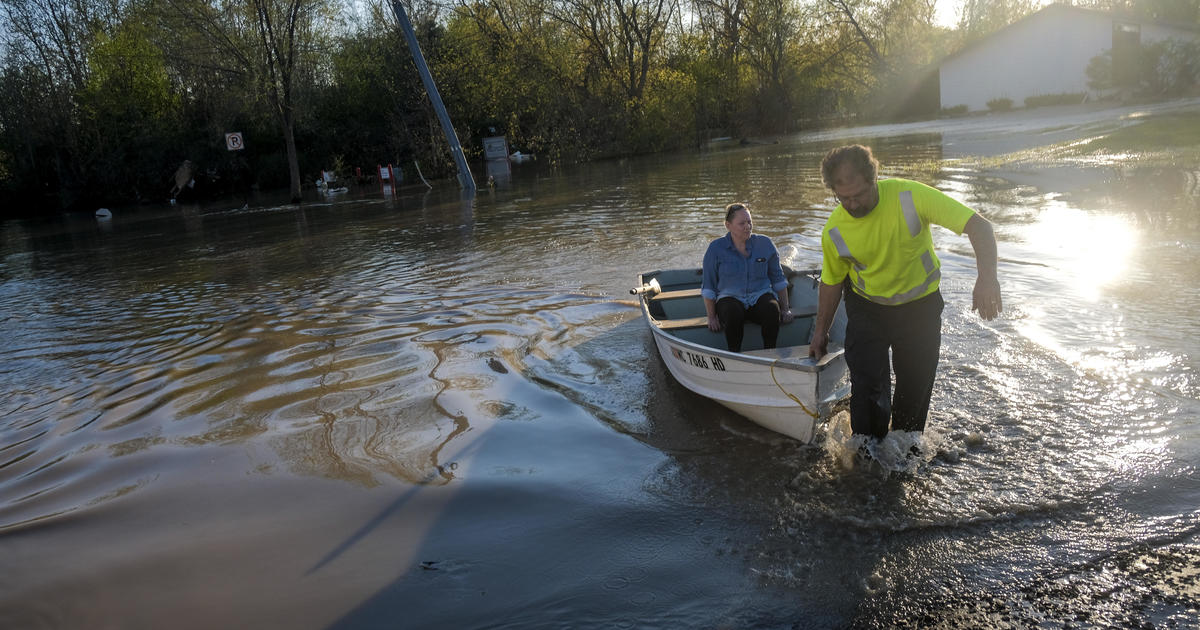Homeowners across the U.S. can expect to pay out $20 billion for flood damage this year, according to new research from the nonprofit First Street Foundation. The dollar amount is about four times what Americans spent repairing flood damage in the 1980s, reflecting the impact of more erratic weather patterns driven by climate change.
Residents in cities along the Gulf and East coasts face the highest risk of flooding in absolute dollar terms. Seven of the 10 cities with the biggest property losses from flooding are in Florida — with Fort Lauderdale, Miami Beach, St. Petersburg and Tampa taking the top slots.
However, the changing weather has also exposed many inland areas of the country unused to severe flooding to the potential of severe water damage. In particular, parts of Appalachia and the Ozarks face potential flood damage in areas outside those historically flagged as flood risks by the Federal Emergency Management Agency.
Consider West Virginia, where 22% of all homes across the state — more than 100,000 properties — risk structural flood damage, according to First Street's analysis. Just a quarter of those are within a FEMA-designated Special Flood Hazard area, in which flood insurance is mandatory.
Because of budget constraints, FEMA historically doesn't map every square inch of the U.S., but prioritizes mapping parts of the country with the largest populations. Consequentially, 6,500 communities do not have a flood map, while another 3,300 have a map that is 15 years old or older, the Association of State Floodplain Managers wrote last year.
Flood mapping serves several purposes beyond flood insurance, according to the organization, including commercial, private and public safety planning to reduce future flood losses.
Incomplete mapping leaves exposed places in the nation where flooding comes from heavy rainfall and small rivers and streams, added Jeremy Porter, director of research and development at First Street.
"These are likely to have heavy precipitation that collects in the ravines, and, [given] the high levels of variability of the topography in the Appalachian area, you're going to end up with flooding because all the water ends up falling into one place," said Porter.
He added, "Most of those properties are outside of Special Flood Hazard areas. But if you actually look at the real risk from precipitation, from small waterway flooding that's not captured by FEMA, then you actually have significant risks."
Flood risk calculator
First Street has attempted to fill this gap, by making publicly available last year a flood risk calculator for nearly every residential property in America, assigning it a score for how likely it was to flood. The new product builds on the group's previous work by placing a dollar amount on the likely flood damage homeowners can expect to cover. First Street's database also indicates how that number is likely to change with future weather patterns.
That may be especially important as climate change drives rainfall into new areas, potentially flooding unprepared inland communities. Two years ago, record rainfall and overflows from the Arkansas, Missouri and Mississippi rivers forced thousands of people to evacuate, destroyed crops and caused over $1 billion in damage. Record rainfall displaced thousands of Michiganders in the Upper Peninsula last year and caused widespread landslides and flooding in southeast Alaska.
Billions in losses
First Street analyzed 4.3 million residential properties of four units or fewer that were at risk of flood damage, and coupled this information with data on building types to come up with dollar amounts of how much money homeowners in these regions could expect to spend remediating flood damage. The estimates only include building damage, leaving out other major expenses residents often encounter in flood disasters, such as replacing furniture and major appliances and the cost of temporary housing.
Meanwhile, in areas of the U.S. southeast that have long lived a copacetic existence with water, rising sea levels are creating more flooding from high-tides. Across the Gulf Coast, where it's increasingly common to elevate houses to protect them from flooding, the potential of water damage is still high as floods have become more frequent and intense.
Florida stands to lose the most money to flood damage, according to First Street's analysis. In addition to having a large population facing water incursions, the state also has a lot of expensive property in the flood zone. Consequently, Floridians can expect to pay $8 billion annually on remediating flood damage, according to the analysis. Other states facing high water-damage bills include California ($1.7 billion annually), South Carolina and Texas ($1.2 billion each) and Louisiana ($888 million).
"People underestimate the power and the danger of water," said Sheldon Yellen, chief executive of Belfor Property Restoration. About half of Belfor's work has to do with repairing water damage, Yellen estimates.
"Disasters are becoming more costly"
Nationally, flooding is the most common and costliest type of natural disaster, according to the Federal Emergency Management Agency.
More than 25 cities in the Atlantic and Gulf Coasts live with daily tidal floods, and "these trends are expected to continue," Michael Grimm, assistant administrator for risk management for the Federal Insurance and Mitigation Administration, told Congress last year.
"Disasters are becoming more costly," Grimm said. "Direct average annual flood losses have quadrupled from approximately $4 billion per year in the 1980s to roughly $17 billion per year between 2010 and 2018."
The trend of more intense, more severe floods is "well within the American heartland," Grimm told Congress. "Simply increasing distance from large bodies of water is no guarantee of protection from flood damage or changing weather patterns."
This article was originally published By Irina Ivanova, cbsnews.com.










